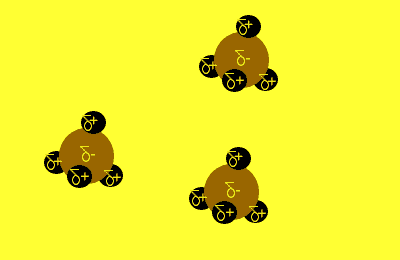Bonding between
non-polar molecules

The animation above shows how the non-polar methane molecules interact. Even though the forces of repulsion are present, attraction still occurs. Small charges (instantaneous dipoles) develop and attract the charges on the nearby molecules. These charges quickly disappear and so the overall electrostatic force of attraction is very weak. These weak forces are known as dispersion forces. Note how the creation of instantaneous dipoles on the molecule on the far left causes the creation of similar dipoles on neighbouring molecules.